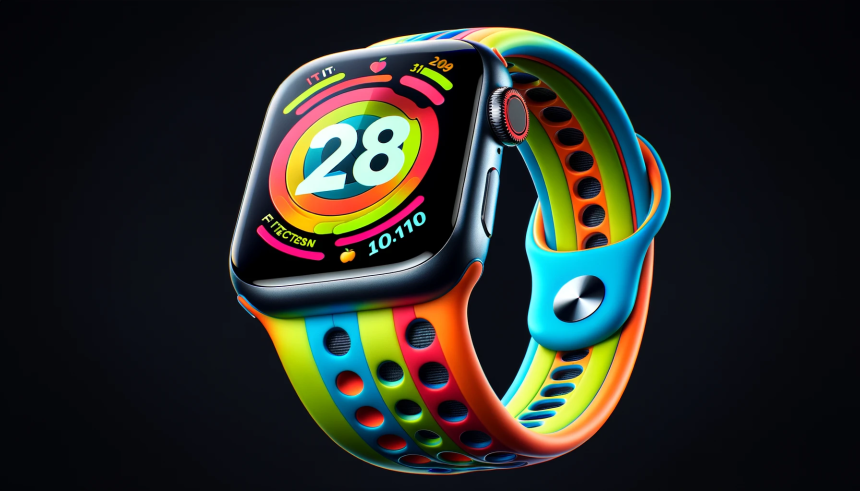Apple is preparing to revamp the Apple Watch with the upcoming Series 10, featuring significant changes in size and design. The new model will come with a larger display, increasing from the current 45mm and 41mm sizes to approximately 49mm and 45mm, respectively. Alongside this, the Apple Watch Series 10 will have a slimmer profile, aligning with the company’s latest design trends.
Apple Watch is a line of smartwatches designed, manufactured, and released by Apple Inc. It was first launched on April 24, 2015. The device integrates fitness tracking, health-oriented capabilities, and wireless telecommunication. The latest models feature enhanced sensors and applications, offering functionalities like ECG, blood oxygen monitoring, and fall detection, among others. The Series 10 is expected to continue this trajectory with improved features and a refreshed design.
Apple has been gradually moving towards slimmer designs across its product lineup, as evidenced by the recently announced M4 iPad Pro, the thinnest iPad ever. This trend signifies a broader strategy within the company to reduce the thickness of its devices, possibly paving the way for future products like the iPhone 17 to follow suit. This shift in design philosophy could be a response to both consumer demand and competitive market pressures.
While the iPhone 16 series will not be part of this new, slimmer category, it’s anticipated that the iPhone 17 will adopt similar design principles. The Apple Watch Ultra, however, is expected to retain its current specifications, with only minor updates such as new color options like black if production aligns with Apple’s expectations. This suggests that while Apple is innovating with new models, it is also maintaining stability in some of its product lines.
Manufacturing Advancements
Apple’s manufacturing process is also set for a transformation with the introduction of 3D-printed components for the Apple Watch. Testing for these components began last year, and the company has reportedly achieved significant improvements in 3D printing efficiency. As a result, production of 3D-printed parts is set to commence in the second half of 2024, marking a new era in how Apple manufactures its devices.
BLT, a former equipment supplier for Apple, will be responsible for producing these 3D-printed components. The cost benefits associated with 3D printing are expected to drive BLT’s growth, with potential for manufacturing entire Apple Watch cases in the future. This shift could lead to more cost-effective production processes and potentially lower prices for consumers.
Potential Market Impact
The integration of 3D-printed components in Apple Watch production could have a significant impact on the market. Enhanced manufacturing efficiency might allow Apple to introduce more competitively priced models, which could broaden the appeal of the Apple Watch. Additionally, this move can set a new industry standard, prompting other manufacturers to adopt similar technologies.
Apple’s strategy to maintain a balance between innovation and consistency is evident in its product updates. While the Apple Watch Series 10 introduces substantial design changes, the Apple Watch Ultra remains largely unchanged. This approach may reassure loyal customers who prefer the stability of existing models while attracting new users with cutting-edge advancements.
As the tech giant continues to innovate, the Apple Watch Series 10 reflects the company’s commitment to enhancing user experience through design and technological advancements. The focus on slimmer profiles and larger displays indicates Apple’s direction towards more streamlined and user-friendly devices, which could influence future product designs across its entire lineup.
The upcoming changes to the Apple Watch Series 10 and the introduction of 3D-printed components demonstrate Apple’s approach to balancing innovation and consistency. The move towards slimmer, larger-display models shows the company’s commitment to evolving its product lineup in response to market trends and consumer expectations. This strategy could potentially set new benchmarks in the industry and redefine user expectations for smartwatch aesthetics and functionality.










